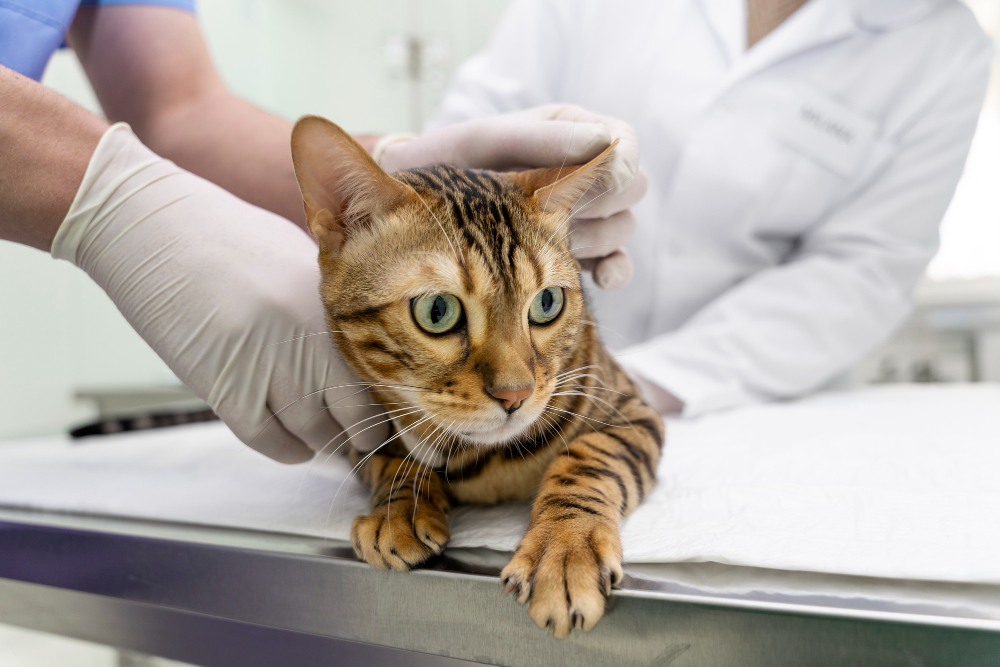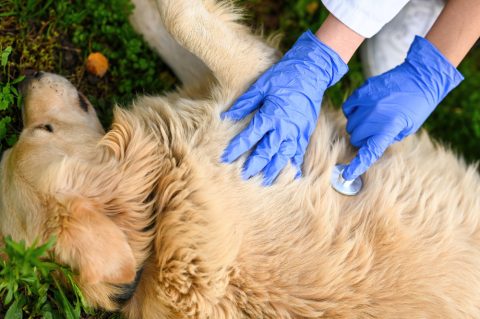Cats are masters of disguise when it comes to pain and illness. Unlike dogs, who might whine or act out when they’re feeling unwell, cats often hide or stay quiet—making it much harder for pet parents to recognize when something is seriously wrong. Knowing the signs of a cat emergency can be life-saving, and being prepared for the unexpected can help you respond calmly and effectively.
In this guide, we’ll walk you through the most important symptoms that may indicate your cat needs immediate medical attention, along with tips on first aid, emergency preparedness, and when to visit your nearest emergency pet clinic.
Contents
- Why It’s Hard to Tell When a Cat Is in Trouble
- Top Signs Your Cat May Be Experiencing a Health Emergency
- What to Do in a Feline Emergency
- Basic First Aid for Cats
- Being Prepared for Emergencies
- Common Emergency Scenarios Cat Owners Should Know
- Financial Considerations in a Cat Emergency
- When to Trust Your Instinct
- Final Thoughts
Why It’s Hard to Tell When a Cat Is in Trouble
Cats are stoic by nature. In the wild, showing vulnerability could make them a target, and this instinct hasn’t left their domesticated relatives. Because of this, even serious conditions may go unnoticed until they become critical.
This is why it’s essential to learn how to spot subtle shifts in your cat’s behavior, body language, and health patterns.
Top Signs Your Cat May Be Experiencing a Health Emergency
1. Repeated Vomiting or Diarrhea
Occasional vomiting might not be alarming, but if your cat is throwing up multiple times in a day, struggling with uncontrollable diarrhea, or both, it could indicate poisoning, organ failure, or gastrointestinal blockage. Severe cases can lead to dehydration and shock.
2. Difficulty Breathing
Any sign of labored breathing—open-mouth breathing, wheezing, or gasping—is an emergency. Cats don’t pant like dogs, so if you notice this behavior, it often means there’s a serious respiratory issue that requires urgent attention.
3. Lethargy or Unresponsiveness
If your cat is suddenly uninterested in movement, food, or interaction—or worse, seems unresponsive—this is a major red flag. It could be a sign of poisoning, internal trauma, or neurological distress.
4. Seizures
Seizures in cats may involve twitching, drooling, loss of consciousness, or rigidity. If your cat has never had a seizure before, seek emergency care immediately. Multiple seizures in a row or prolonged episodes (longer than a couple of minutes) are also cause for urgent concern.
5. Swollen Abdomen
A distended belly could mean internal bleeding, organ issues, or a life-threatening condition like gastric dilatation (bloat). If your cat’s belly feels hard or they’re uncomfortable being touched, don’t wait—head to an emergency clinic.
6. Difficulty Urinating
Straining to urinate, vocalizing in the litter box, or passing only small drops are symptoms of a urinary obstruction—especially dangerous in male cats. Left untreated, this condition can lead to kidney damage or bladder rupture.
7. Sudden Collapse or Inability to Walk
If your cat collapses or struggles to stand or walk, it could point to trauma, blood clots, or spinal issues. Immediate evaluation is necessary to determine the cause and prevent further harm.
8. Bleeding That Won’t Stop
Minor cuts can be treated at home, but uncontrolled bleeding or blood coming from the mouth, nose, or rectum warrants immediate veterinary evaluation.
9. Eye Injuries or Sudden Vision Loss
A cloudy, bulging, or red eye—or signs that your cat can’t see properly—are emergencies. Eyes are delicate and damage can escalate quickly without treatment.
10. Not Eating or Drinking for Over 24 Hours
Cats are sensitive to fasting. If your cat hasn’t eaten or drunk anything in a day, especially if they’re also hiding or showing other symptoms, it’s time to seek professional help.
What to Do in a Feline Emergency
1. Don’t Panic—But Act Quickly
Your calm energy will help your cat stay as relaxed as possible. Gently place your cat in a carrier or secure box lined with towels, and avoid excessive handling if they’re in pain.
2. Call Ahead
Before rushing out the door, call your local emergency vet to let them know you’re coming. This allows them to prepare for your cat’s arrival and may give you vital advice for transport.
3. Avoid Home Medications
Never give your cat human medications or over-the-counter remedies unless instructed by a vet. Many drugs safe for humans—or even dogs—are toxic to cats.
Basic First Aid for Cats
While no home remedy replaces professional care, here are a few steps to help stabilize your cat for transport:
Controlling Bleeding
Wrap a clean gauze pad or cloth around the wound and apply firm, gentle pressure. Do not remove the pad if it becomes soaked—layer a new one on top and keep applying pressure until clotting begins.
Helping a Choking Cat
If your cat is pawing at their mouth or gasping, they may be choking. Gently open their mouth and try to remove any visible object—but be extremely careful not to push it further. If the object won’t come out easily, seek emergency help immediately.
Seizure Response
Do not restrain your cat during a seizure. Remove nearby objects and turn off bright lights or loud noises. Once it’s over, keep them warm and quiet while you call your vet.
 Being Prepared for Emergencies
Being Prepared for Emergencies
You never know when a crisis might strike. Here are a few steps you can take to stay ready:
- Know the location and contact info for your nearest emergency pet clinic
- Keep a pet first aid kit at home and in your car
- Learn basic feline CPR and emergency handling
- Store digital copies of your cat’s medical history for easy access
- Set aside a small emergency fund or explore pet insurance plans (especially those that cover accidents or chronic conditions)
Common Emergency Scenarios Cat Owners Should Know
- Outdoor cats are more prone to trauma-related injuries like car accidents or animal fights
- Cats who eat string, tinsel, or small toys may suffer from dangerous intestinal blockages
- Ingesting houseplants or human foods like onions and garlic can result in poisoning
- Cats living in high-rise apartments may fall from windows without secure screens (a phenomenon known as “high-rise syndrome”)
Financial Considerations in a Cat Emergency
Emergency care can be expensive. Diagnostic tests, overnight observation, and treatments add up quickly. Planning ahead by setting aside savings or enrolling in a coverage plan can reduce financial stress during a crisis. Postponing treatment for cost reasons can result in more serious outcomes—and higher bills later.
When to Trust Your Instinct
If something feels “off” about your cat, even if you can’t pinpoint a symptom, it’s better to be safe than sorry. You know your pet best. Sudden changes in behavior or appearance—even subtle ones—are worth a vet’s opinion.
Some pet owners have access to online health portals or 24/7 emergency chat services. These tools can offer guidance when you’re unsure what to do. But if your cat seems seriously unwell, don’t wait for a reply—get them to the nearest clinic right away.
Final Thoughts
Cats are mysterious, beautiful creatures who often keep their pain hidden. But with attentive care, a bit of education, and a solid emergency plan, you can give your cat the help they need when it matters most.
Knowing the warning signs, having quick access to care, and trusting your gut could mean the difference between a scare and a tragedy. Your furry friend depends on you—and with the right knowledge, you’ll be ready to protect them when it counts.







 Being Prepared for Emergencies
Being Prepared for Emergencies